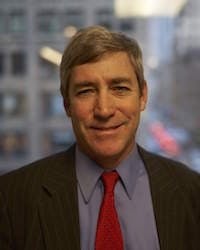Why are microgrids a good energy solution for hotels? Mike Byrnes, senior vice president Veolia North America, explains in an interview with Yasmin Ali, Microgrid Knowledge contributor.
What kind of hotels are good candidates for microgrids?
Mike Byrnes, senior vice president, Veolia North America
Mike Byrnes: Generally, the larger the better, as the capital costs go up significantly per unit when you get smaller. The hotel needs a good mix of thermal and electric demand. And if you’re going to use a combined heat power (CHP) based microgrid, which would generate electricity and heating, you’ll need large amounts of hot water and heat demand. Large cooling demands for things like air conditioning work well too. These can be met with tri-generation systems that provide a combination of electricity, heating and cooling.
Some smaller hotels tend to have individual room air conditioners and heating units; those don’t lend themselves well to a full combined heat and power system, as this needs central infrastructure. Converting from individual heating or cooling units to a central generation system can be very expensive.
If a hotel doesn’t have a large heating demand, a microgrid utilizing solar PV plus storage may be more appropriate. It could help manage electricity costs and increase resiliency.
What type of benefits do hotels generally look for from a microgrid?
MB: Hotels are always looking for the money savings and an appropriate payback. That’s top of the list for everyone. They like the green and sustainability benefits, but a microgrid is generally so capital intensive that it has to pay for itself.
Are there generation sources that are best suited for hotels?
MB: Yes, it depends on the size. In the past we have used small and large reciprocating engines, gas turbines and tri-generation units if the hotel is big enough. Big enough means it’s got to be a major hotel with a conference center, ballrooms, outbuildings and things like that.
The McCormick Place in Chicago had a major CHP plant, thermal storage, chilled water storage, and 24/7 staff. But McCormick Place is one of the four largest convention centers and hotel complexes in the country so they could afford it. Most medium or large hotels will default to reciprocating engines, usually 1 to 3 MW in capacity. These can run unmanned; you don’t need full time 24/7 staff on them.
What about renewable generation sources for hotel microgrids?
MB: They are great, if the hotel has space for a solar field or a small wind turbine on the roof. For solar, you need a large area. Renewable generation can make some savings on energy bills, but gas fired and cogeneration plant is needed for big savings, resiliency, and reliability.
Veolia recently worked on a highly publicized microgrid for the TWA Hotel at JFK Airport. Why did a microgrid make sense for this hotel?
MB: The microgrid made sense for them for a lot of reasons. They’re in New York City, an area with a high electricity cost, and it’s a large hotel with a large convention center. They also have big heating, ventilation and air conditioning (HVAC) needs, so gas fired cogeneration made sense. They decided to disconnect from the grid and become self-sufficient.
They have energy storage; this would have made sense for them even without coming off the grid because of the high prices during times of peak power demand in New York. You can meet the demand of the afternoon peak with electricity stored in batteries overnight, which supplements your CHP plant.
Was the TWA hotel typical? How likely are other hotels to go completely off grid like TWA?
MB: TWA wanted to do this to meet their sustainability goals, but mostly they wanted cost savings. They knew they wanted a microgrid for resiliency purposes and sustainability. They evaluated the cost of being tied to the grid, and did a cost benefit analysis. This showed it was economical to spend more upfront putting extra energy generation and storage into the building, removing the need to rely on the grid for backup.
I don’t think it’s going to become a huge trend for other hotels to go off grid, because this requires additional capital upfront. You need spinning reserve for resiliency, meaning you have to have engines running. In TWA’s case, they use the battery as spinning reserve — if one of their engines defaults, the system will switch over to the battery for a short period of time while other engines get up and running. More capital is needed for this. Most hotels would prefer to minimize the upfront capital while saving money and resiliency benefits. This usually means remaining reliant on the grid for backup.
Is this something worth thinking about for a hotel? Could they potentially save a lot of money?
MB: Oh yes, absolutely. Again, it depends on size and location. In places with high energy prices, and where resiliency is needed, like the Caribbean and Hawaii, any hotel of any substance will have a microgrid because the power is both expensive and unreliable.
In the Caribbean, if they didn’t have their own microgrids running, they’d have emergency generators because the reliability is not there and you can’t have your guests going for hours, days without power. – Mike Byrnes, Veolia
In the Caribbean, if they didn’t have their own microgrids running, they’d have emergency generators because the reliability is not there and you can’t have your guests going for hours, days without power.
What advice would you give to a hotel that is considering a microgrid?
MB: The most important thing for a hotel owner is to have a very strong energy analysis done at the beginning. They need to understand where they’re using energy, what the cost structure is, and what it will look like after they’ve spent all this money to install a microgrid. If you don’t do that, you end up buying equipment, which is not where you want to be. You want to buy a system and a financial and technical solution.
Any microgrids I’ve seen that were not successful were designed too large, too small, or didn’t have the right mix of thermal and electric generation. It’s really important to get an accurate baseline and outline design; the detailed engineering can follow. This is a different skill set to those provided by a typical engineering or architecture firm.
Mike Byrnes is a senior vice president Veolia North America.







